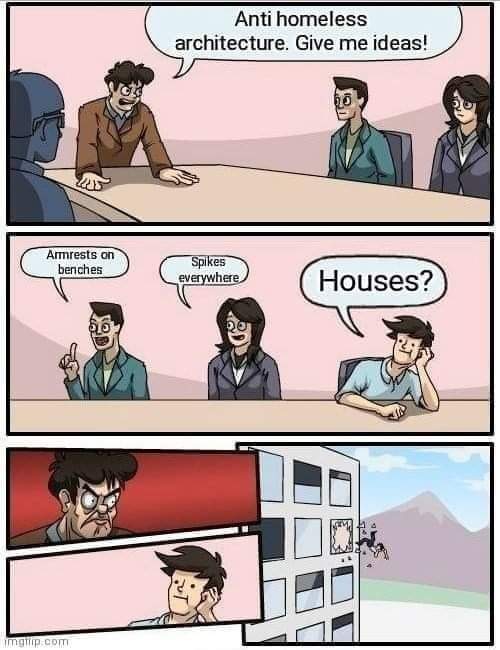this post was submitted on 08 Nov 2023
1375 points (97.3% liked)
Memes
50161 readers
821 users here now
Rules:
- Be civil and nice.
- Try not to excessively repost, as a rule of thumb, wait at least 2 months to do it if you have to.
founded 6 years ago
MODERATORS
you are viewing a single comment's thread
view the rest of the comments
view the rest of the comments

This particular statistic needs to be handled carefully. There are problems with both its definition and its nature. Empty housing has a fairly broad definition that includes housing that is unfinished, in the middle of repairs, or unfit for habitation.
The nature of housing with relationship to homelessness depends a lot on where the homeless people are and where the housing is. Empty housing in towns and cities that are depopulating is unlikely to be all that useful. Simply taking people from cities with high levels of homelessness, ripping them out of their communities, and plopping them down into communities that other people are leaving is not a favor.
Also, you shouldn't just warehouse unhoused people in whatever housing is available. Many of them have mental illnesses that need good access to mental health services, transit, and jobs. Just because they're under a roof doesn't mean the job is done. The housing should be tailored to the various populations that it will be serving.
I encourage you to lookup up Housing First if you have not already. While it may be misleading to say there are 16 million vacant home to half a million homeless people (32 homes for every homeless person), for the reasons you mentioned, it is entirely possible house these people.
No one who knows about this issue is thinking about warehousing people. Like you said they need a stable place to live, access to services, transportation, and work when they are ready.
I'm familiar with Housing First. I mostly just didn't want to see a misleading use of statistics left unchallenged. Statistics around housing are difficult to grasp, so I often see them used in a misleading way, usually unknowingly.
Take one statistic, the rental vacancy rate in my city, Portland. It has lately been around 4%. Given the number of homeless people in the city, that feels like a travesty. But when you start to do calculations, that turns out to be an average of 2 weeks every four years. If you have tenants moving out after four years, that's barely enough time to do a few repairs, let the paint dry, and finding new tenants. What seemed like a loose market turns out to be a very tight market.